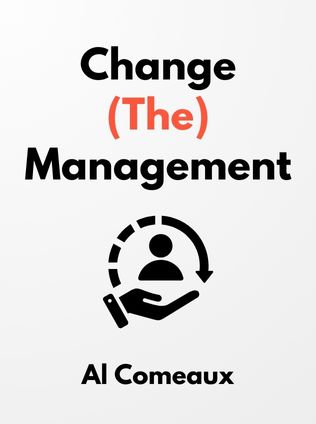
Change (the) Management
Why We as Leaders Must Change for the Change to Last
By Al Comeaux
Published 05/2020
About the Author
Al Comeaux, a former executive at Travelocity, GE, and American Airlines, is a decorated corporate pioneer and global authority on change from inside organizations. His career championing change as a senior leader at uber-disruptive dot-coms as well as established, world-renowned companies—and his 20-year journey researching why so many change efforts fail and what’s needed for success—make him one of the world’s most forward thinkers on what leaders must do—and how they must think—to succeed at change. In 2019, Al founded Primed for Change, a disruptive new project created to prepare leaders to take organizations successfully through change.
Main Idea
In "Change (the) Management: Why We as Leaders Must Change for the Change to Last," Al Comeaux outlines the behaviors, mindsets, and outdated approaches to change that managers and leaders have, which derail lasting change in their teams and organizations. He then describes how leaders can transform their approach to change to foster buy-in from team members, become allies of change, fully align on the problem, and listen to their teams while modeling changes themselves. Leaders are equipped with a toolset for successfully managing change in their organizations and a detailed list of habits and behaviors to avoid that can stand directly in the way of real and lasting change.
Table of Contents
- Introduction
- This is Not a “They” Problem
- Enemy #1: Our Own Cognitive Dissonance
- Enemy #2: Our Outdated Ideas About Communications
- Enemy #3: We Let Inertia Get in the Way
- Enemy #4: Our Belief in Change by Decree
- Enemy #5: We Live in the Weeds
- Enemy #6: How We View People
- Reorientation: We Pull. We Don’t Push.
- We Align on the Problem
- We Listen
- We Model the Change
Introduction
Successful changes in an organization are anything but easy. Behavioral change requires emotional buy-in from those being asked to change their behaviors. Given the growing body of science pointing to the importance of emotion in decision-making—even in rational business decision-making—it’s become clear that intellectual arguments will only drive so much change, and only for so long. For change management to work and last—for the energy to be there among those going through the change—we must focus on both the intellectual dimension and the emotional dimension: we must be both smart and have heart.
The reality is that if we want successful, lasting change, we should not try to get people to change their behaviors. Instead, we must get people to want to change their behaviors. The former yields mere compliance; it’ll last a while, but usually not for long. The latter is contagious, energy-inducing, and long-lasting. And the difference is monumental. The best way to drive a desire for behavior change is for employees to understand the what and why of the change, and to see examples of the change itself from certain behaviors by leaders: modeling, listening, asking people to join, and pulling people to change through emotional connection.
This is Not a “They” Problem
We often think our challenges for change programs are ‘they’ problems, such as problems with middle management or front-line employees. But when it comes to assessing the biggest challenges to change, we need to look at ourselves first. Often, we are the enemies of change—even when we don’t realize it. We take every opportunity—whether conscious or unconscious—to get in the way of change. We’re also enemies of change when we think the organizations where we work, the projects we work on, the people who work for us, and the positions we hold make the change a ‘they’ thing, not a ‘we’ thing.
Sign up for FREE and get access to 1,400+ books summaries.
You May Also Like
The Subtle Art of Not Giving a F*ck
A Counterintuitive Approach to Living a Good Life
By Mark MansonRich Dad Poor Dad
What the Rich Teach Their Kids About Money - That the Poor and Middle Class Do Not!
By Robert T. KiyosakiHow To Win Friends and Influence People
The All-Time Classic Manual Of People Skills
By Dale CarnegieQuiet: The Power of Introverts
The Power of Introverts in a World That Can't Stop Talking
By Susan Cain



















